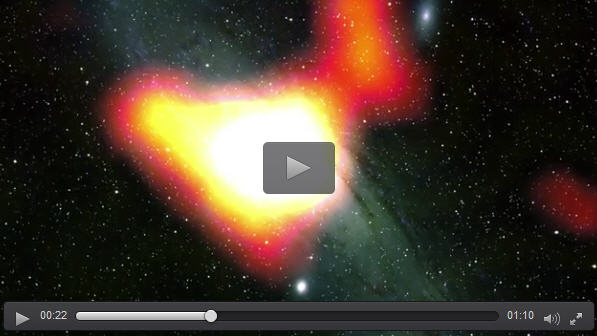NASA's fermi finds possible dark matter ties in andromeda galaxy

NASA's Fermi telescope has detected a gamma-ray excess at the center of the Andromeda galaxy that's similar to a signature Fermi previously detected at the center of our own Milky Way. Watch to learn more. Credit: NASA's Goddard Space Flight Center/Scott Wiessinger, producer
Gamma rays are the highest-energy form of light, produced by the universe's most energetic phenomena.
They're common in galaxies like the Milky Way because cosmic rays, particles moving near the speed of light, produce gamma rays when they interact with interstellar gas clouds and starlight.
Surprisingly, the latest Fermi data shows the gamma rays in Andromeda — also known as M31 — are confined to the galaxy's center instead of spread throughout.
To explain this unusual distribution, scientists are proposing that the emission may come from several undetermined sources.
One of them could be dark matter, an unknown substance that makes up most of the universe.
Media Contact
All latest news from the category: Physics and Astronomy
This area deals with the fundamental laws and building blocks of nature and how they interact, the properties and the behavior of matter, and research into space and time and their structures.
innovations-report provides in-depth reports and articles on subjects such as astrophysics, laser technologies, nuclear, quantum, particle and solid-state physics, nanotechnologies, planetary research and findings (Mars, Venus) and developments related to the Hubble Telescope.
Newest articles

Trotting robots reveal emergence of animal gait transitions
A four-legged robot trained with machine learning by EPFL researchers has learned to avoid falls by spontaneously switching between walking, trotting, and pronking – a milestone for roboticists as well…

Innovation promises to prevent power pole-top fires
Engineers in Australia have found a new way to make power-pole insulators resistant to fire and electrical sparking, promising to prevent dangerous pole-top fires and reduce blackouts. Pole-top fires pose…

Possible alternative to antibiotics produced by bacteria
Antibacterial substance from staphylococci discovered with new mechanism of action against natural competitors. Many bacteria produce substances to gain an advantage over competitors in their highly competitive natural environment. Researchers…





















